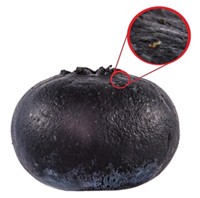Advertisement
Grab your lab coat. Let's get started
Welcome!
Welcome!
Create an account below to get 6 C&EN articles per month, receive newsletters and more - all free.
It seems this is your first time logging in online. Please enter the following information to continue.
As an ACS member you automatically get access to this site. All we need is few more details to create your reading experience.
Not you? Sign in with a different account.
Not you? Sign in with a different account.
ERROR 1
ERROR 1
ERROR 2
ERROR 2
ERROR 2
ERROR 2
ERROR 2
Password and Confirm password must match.
If you have an ACS member number, please enter it here so we can link this account to your membership. (optional)
ERROR 2
ACS values your privacy. By submitting your information, you are gaining access to C&EN and subscribing to our weekly newsletter. We use the information you provide to make your reading experience better, and we will never sell your data to third party members.
Biological Chemistry
How beetle moms tell mates to bug off
Study identifies antiaphrodisiac and links it to an infertility hormone
by Bethany Halford
March 28, 2016
| A version of this story appeared in
Volume 94, Issue 13
Caring for newborns is tough for all kinds of new parents. The burying beetles Nicrophorus vespilloides, for example, have to juggle their responsibility of feeding carrion to hungry larvae and their drive to make more offspring. Tending to existing young, rather than making new ones, is the more successful strategy for this beetle. Now, researchers led by Sandra Steiger of the University of Ulm have discovered that the female N. vespilloides manages this balancing act by being infertile in her brood’s early days. What’s more, the scientists found females give off a volatile compound that lets males know nothing will come from efforts to copulate (Nat. Commun. 2016, DOI: 10.1038/ncomms11035). By using deuterium labeling, the researchers learned that the hormone that makes the female infertile and the antiaphrodisiac pheromone—methyl geranate—arise from the same biosynthetic precursor. “There can be intense conflicts between males and females over mating rate or how much each sex should invest in raising the young,” the authors note. “Our results uncover mechanisms underlying parental care decisions, and illustrate how a physiological interplay between hormone and pheromone systems guarantees that both parents draw their attention towards the existing young as long as they are needy.”





Join the conversation
Contact the reporter
Submit a Letter to the Editor for publication
Engage with us on Twitter